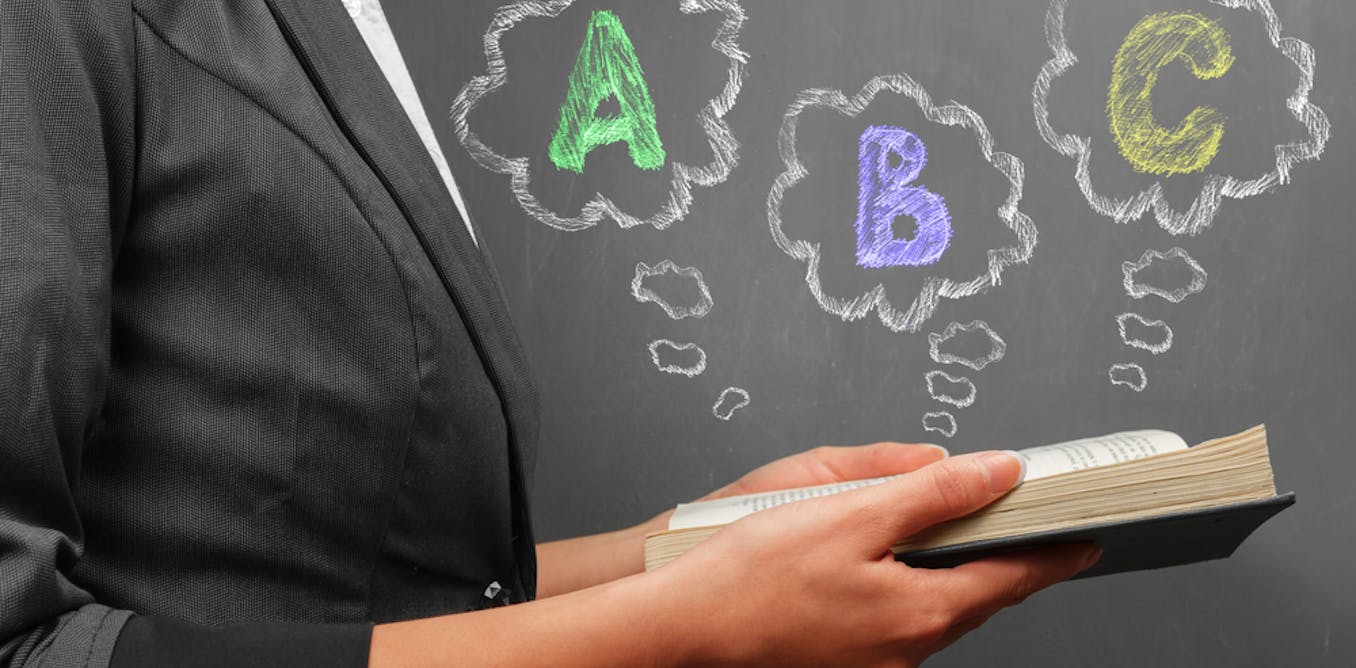
A balanced approach is best for teaching kids how to read
- Select a language for the TTS:
- UK English Female
- UK English Male
- US English Female
- US English Male
- Australian Female
- Australian Male
- Language selected: (auto detect) - EN
Play all audios:

We all want young children to be given the very best opportunities to become successful, engaged and passionate readers. The teaching of reading is constantly mired, however, in a tired old
debate between proponents of “phonics” (sounding out words) and “whole language” (which focuses on meaning and using the context to decipher unknown words). This argument is an unhelpful and
misleading dichotomy given the evidence actually supports a balanced approach to literacy, which goes well beyond being able to recognise words on a page. WHAT IS A BALANCED APPROACH TO
LITERACY? The biggest review of scientific research on reading was conducted by the US National Reading Panel in 2000. The panel was clear in finding: > Systematic phonics instruction
should be integrated with other > reading instruction to create a balanced reading program. The panel argued that a balanced approach incorporates phonemic awareness and phonics
(understanding the relationships between sounds and their written representations), fluency, guided oral reading, vocabulary development and comprehension. The report also stated: >
Phonics should not become the dominant component in a reading > program, neither in the amount of time devoted to it nor in the > significance attached. It is important to evaluate
children’s > reading competence in many ways. A 2005 Australian National Inquiry into the Teaching of Literacy supported this balanced approach, with the use of synthetic phonics
recommended in the first couple of years of schooling for beginning readers. Similarly, the UK 2006 reading review recognised: > Word recognition is a time-limited activity that is
eventually > overtaken by work that develops comprehension. Of course there are differences in what the balance might look like in different classrooms and across different year levels.
However, claims that teachers are using a little bit of phonics and a lot of whole language in Australian schools are wrong. Referring to balanced literacy as a mess of methods simply shows
a lack of understanding about how classrooms operate. A balanced approach provides us with a best-practice model for teaching all students how to read and write across all stages of their
education. LITERACY ISN’T JUST ABOUT LEARNING HOW TO READ It is important to remember that literacy learning is broad and takes place at all levels of schooling. It’s not just about learning
to read in the early years. The current focus on phonics as a fix-all for struggling readers is problematic as it misses the complexities of literacy learning. Being literate requires a
much broader repertoire of skills than simply reading and writing as the decoding and encoding of printed words. The ability to make meaning from texts, ask questions and read between the
lines is, in many ways, much more important. Paulo Freire, the much-respected Brazilian educator, called this Reading the World and Reading the Word. To teach our students to do any less
would be the real failure. WHAT NEEDS TO BE DONE The recent report into teacher training recommends that all student teachers be taught literacy, not just primary teachers. This is already
happening in many universities. For example, I teach a literacy course with students who are studying to be high school teachers in areas such as mathematics, physics, health and physical
education. We investigate the literacy requirements of each subject and the teaching of reading and writing within those contexts. However, just as important is the ongoing professional
development and mentoring offered to teachers working in schools. We need to provide all teachers with the opportunities and tools to engage in literacy teaching that goes beyond just
recognising words on a page. The problem is that education research is so seldom used to inform education policy and practice. The seemingly endless cycle of reviews and reforms create a
sense of frustration and fatigue, particularly for classroom teachers who are constantly placed under pressures to implement this new curriculum or that new school-wide strategy, improve
NAPLAN results, and so on. It is made worse by ideological divisions in research, where large-scale randomised control trials are assumed to be the only valid form of research, to the
exclusion of smaller case studies, ethnographic projects, classroom interventions and other more qualitative approaches. We should be seeking out new ways to explore how children learn to
read, rather than discounting different methods for one tried-and-tested approach. A 2007 review of literacy research in Australia argued: > More effective and forward-looking
understanding of literacy > teaching is important for researchers, teachers, learners and the > societies they inhabit. The best way forward would be for researchers from diverse
fields, including education, psychology and speech pathology, to get together and work in ways that cross over the arbitrary boundaries. Perhaps this would finally get us off the
merry-go-round of the reading wars, which really help no-one. ------------------------- _Editor’s note: Stewart will be answering questions between 1 and 2pm AEDT on Wednesday February 18.
You can ask your questions about the article in the comments below._
